Dendroarchaeology and dendroclimatology in northern Germany during the third and fourth century CE
Dendroclimatologist Daniel Balanzategui from the DAI Natural Sciences Division blogs on new tree-ring data that reveals settlement dynamics and a potential water and agrarian crisis across northern Germany in the third and fourth century CE.
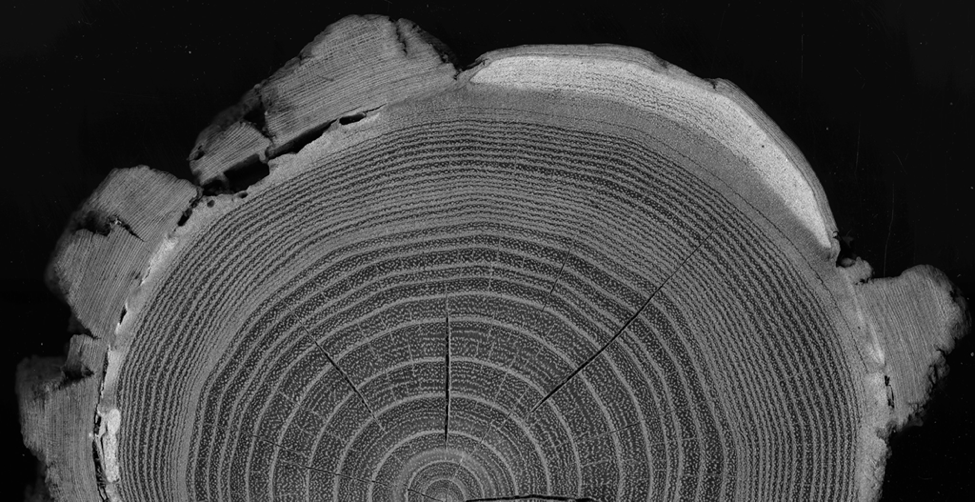
Discovering northern Germany’s environmental and anthropological history through its natural archives
Since 2014 my work has focused on the environmental and cultural information stored in the growth rings of trees. Central to my research is dendrochronology and dendroclimatology, the scientific fields that precisely date tree-ring sequences to the year they were formed and determine what climatological factors are responsible for controlling different aspects of the tree ring (size, anatomy and geochemistry). For my research in northern Germany, I typically use a combination of material derived from living trees, relict or sub-fossil wood, and timber from archaeological constructions that together give my investigations the potential to reach back centuries to millennia. In the project “Environmental Crisis in the Fourth Century CE” funded by the DAI research cluster 9: Groundcheck , I am using tree felling dates as a proxy record for settlement activity alongside climatic information contained in oak tree-rings to reveal socio-environmental dynamics in northern Germany in the third and first half of the fourth century.
The connection between oak tree-ring geochemistry and climate
While oak trees growing in northern Germany produce ring-width sequences ideal for wood dating or tracing felling activity, the measurement series they produce are less suitable for reconstructing the past because tree-ring growth often correlates poorly with environmental data. To make better use of archaeological wood in the DAI wood collection, oxygen and carbon stable isotopes of the tree-ring series were measured during my Groundcheck project and successfully linked with the agrometeorological variables sunlight, temperature, humidity, and wind. Consequently, the strong relationship shared between tree-ring geochemistry and climate data can now be used to describe the state of the atmosphere and plant water stress during the cropping season for the time frame that oak samples exist.
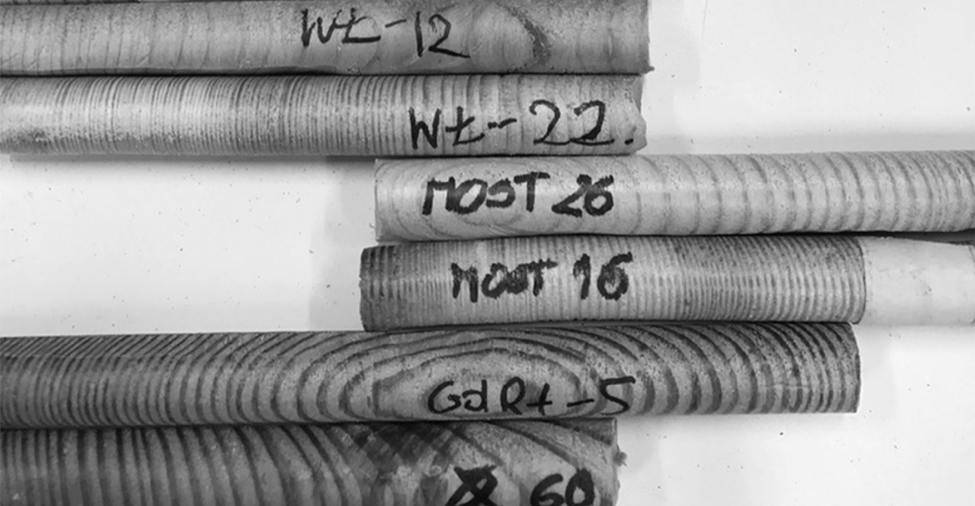
North German oak collection
For the Groundcheck project I have focused on a subset of oak samples from the north German tree-ring database – a repository of dendro-dated archaeological wood material curated by the DAI’s recently retired dendroarchaeologist, Dr. Karl-Uwe Heußner and his successor, Dr. Ingo Heinrich. Unlike today’s managed forests that are mainly composed of pine plantations, oak trees once dominated the primeval forests of the European lowlands and were the main timber used by the region’s earliest inhabitants.
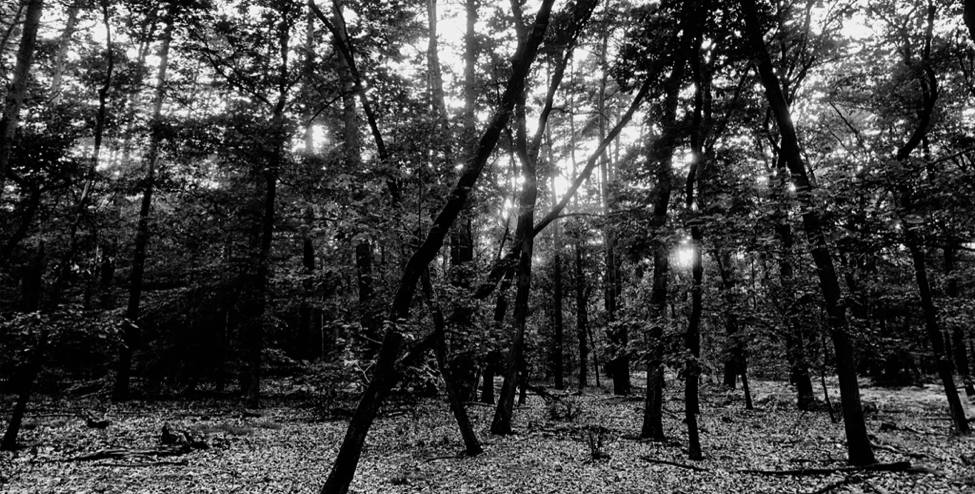
While the DAI’s oak repository reaches back to the eighth millennium BCE and exceeds over one hundred thousand samples, it is the changing size of the collection through time that has become one of the greatest surprises and most important discoveries of Dr. Heußner’s career. Based on oscillations in tree felling dates in the first millennium CE, Dr. Heußner has identified previously undescribed anomalies in the region’s settlement activity during the 3rd and 4th century that remain to be explained by archaeologists or palaeoscientists.
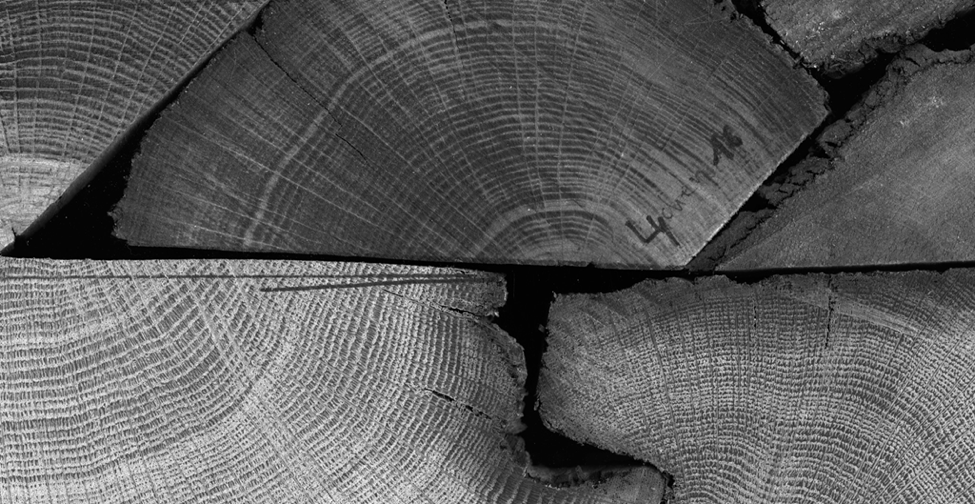
Settlement activity in northern Germany from 100 BCE to 700 CE
The figure below shows the temporal distribution of dendro-dated oak wood derived from archaeological constructions in the study region – the time period of our Groundcheck study is highlighted by the yellow shading. To place the study period into context, over the past three decades a total of 715 wood samples from northern Germany, 68 from water wells and 647 from buildings, covering the period 100 BCE to 700 CE have been found and successfully dated. When the temporal characteristics of the felling dates of these samples are shown together, pulses in settlement activity are revealed in the 1st century, at the start of the 2nd century, throughout the 3rd century, and towards the end of the 7th century (all CE). In contrast, decreasing trends in the number of felling or absence of activity can be found in the mid 1st century BCE, mid 3rd and 6th century CE, indicates settlement regression or construction hiatus. Besides these distinguishing features is the cluster of samples derived from well constructions that mainly appear between 250 and 420 CE that possibly reflects changes in water acquisition for greater convenience, or a dependence on alternative water sources in response to a drying landscape.
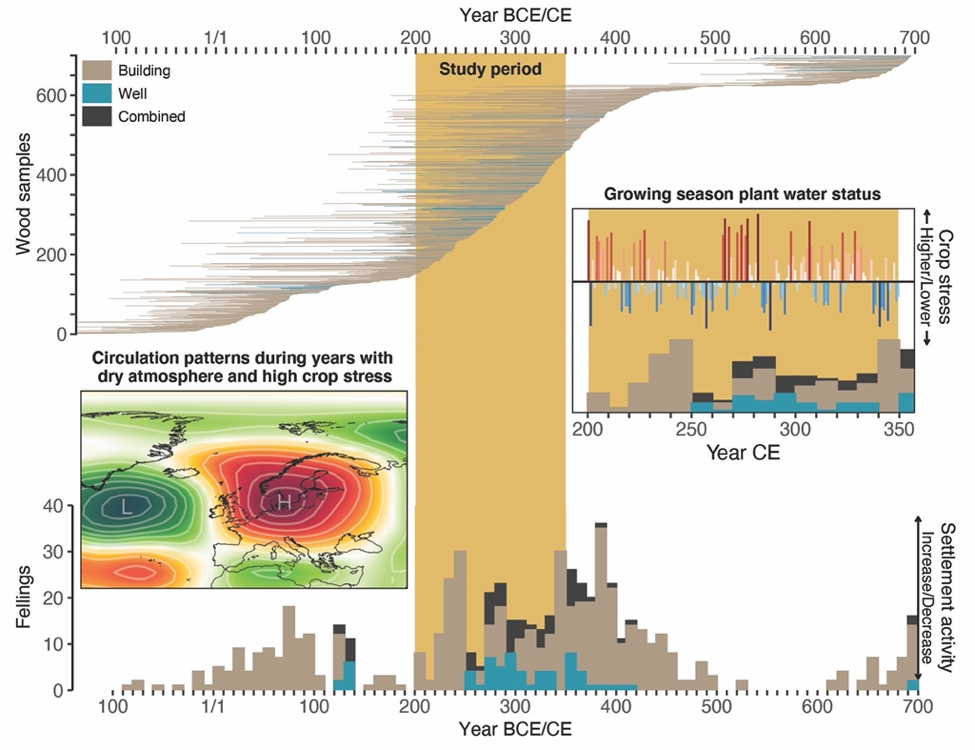
Above: Temporal distribution of dendrochronologically dated wood remains of prehistoric building constructions and water wells for northern Germany between 100 BCE and 700 CE. The main period under investigation in this study is shown by the yellow shading. Top, temporal coverage of wood samples from above ground archaeological building remains (brown bars) and below ground water wells (blue bars) ordered by outermost tree-date (i.e., the actual or approximate year the tree was felled). Bottom, the number of archaeological samples pooled by decade. Right inset, high (red) to low (blue) reconstructed evapotranspiration used in this study as an indicator for plant water status and crop stress. Underneath the reconstruction is the decadally binned building activity for comparison. Left inset, Atmospheric circulation patterns at 500 hPa geopotential height during years with anomalously high evapotranspiration (1959, 2003, 2010, 2018, 2019) with respect to the climatological reference period, 1981 to 2010. H = area of high pressure associated and the blocking system that can create flash-drought conditions over central Europe. L = area of low pressure.
Preliminary insights into 3rd and 4th century building activity and socio-environmental dynamics in northern Germany
An initial evaluation of the archaeological and palaeoclimate data has revealed some surprising and unexpected results. First, inflection points in the number of tree fellings indicate two distinct reversals in settlement activity around the 24th and the 38-39th decade. Second, the temporal distribution of above and below ground construction material show contrasting trends, however, whether these observations reflect spatial rather than temporal differences in the oak collection requires further investigation. Third, over the entire 800-year felling record, wood material recovered from water wells mainly appears between the mid third and early fifth century suggesting the need for underground water sources in the first millennium. Lastly, reconstructed agrometeorological conditions indicated a dry climate with moderate crop stress during the early 200s and 300s, whereas a cluster of intense extreme events between 265 and 282 is likely to have had a devastating impact on agricultural productivity and provides an important clue for explaining the establishment of water wells in the region.
Project members and partners
Daniel Balanzategui
Ingo Heinrich
Karl-Uwe Heussner
Alexander Janus
Philipp von Rummel
Gerd Helle (GFZ Potsdam)
